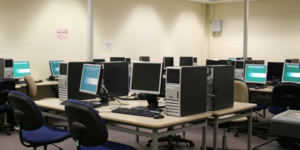Technology is getting smarter and, thanks to recent big advances in machine learning, it can now automate many of the functions that used to be performed by humans. Self-healing automation is the next step in this revolution. It refers to applications, devices, and systems that can discover system faults or security problems, and make the necessary changes to fix them, without human intervention. It’s set to be a game-changer for IT departments that spend huge amounts of time resolving issues and dealing with security threats.
What is self-healing automation?
The idea that systems could be designed to diagnose and repair themselves can be traced back to the early 2000s, when IBM initiated the term “autonomic computing.” It was inspired by the human body’s ability to self-heal. Now that technologies, such as mobile networks and the internet of things (IoT) look set to rival the human body in complexity, the concept is becoming more relevant than ever before. A key attribute of self-healing automation is that it is proactive, not reactive, which allows it to:
As such, this type of automation will become not just a benefit, but a necessity when using business systems that are too big and complex for people to manage alone.
What are the business benefits?
It’s been said, accurately, that every company is now a technology company. Businesses of all sizes need their software, computers, and office machines to run efficiently and securely. In today’s increasingly connected world, they can’t afford outages that will significantly disrupt customer service.
In the office, self-healing automation is already beginning to play an important role in protecting businesses from malicious security breaches and attacks. Laptops, mobile phones and other networked devices are all potential targets for hackers who want to break into the company’s network. The risk even extends to previously overlooked devices such as multifunction printers, which are powerful computers in their own right. As a result, some of companies that want to focus on growth and innovation, and not just keeping the lights on.

